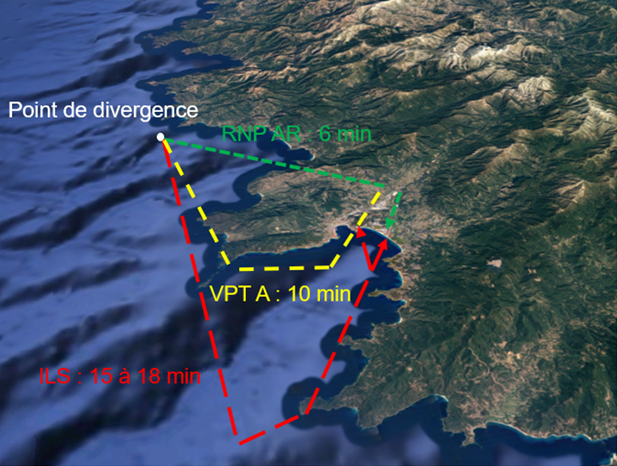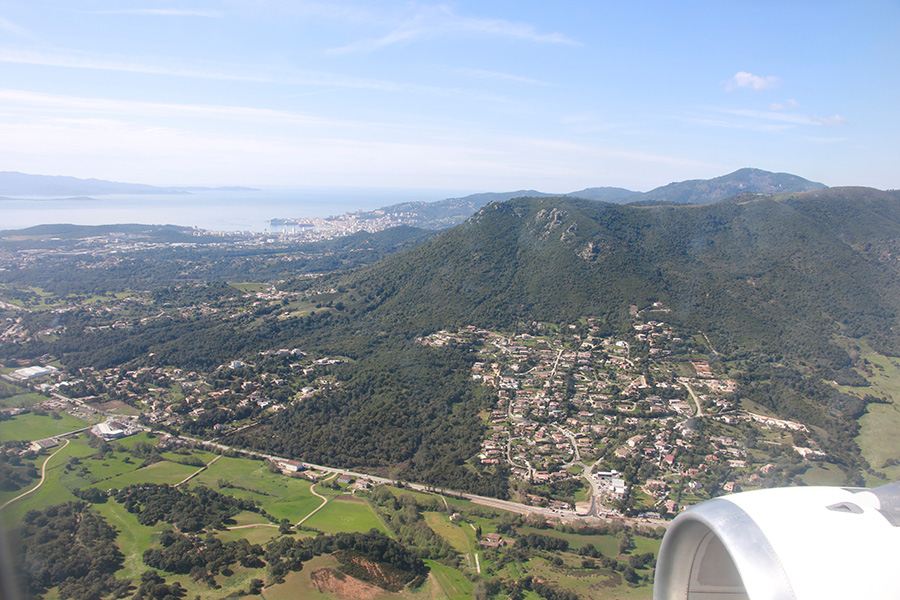On 4 April, France’s air navigation service provider, DSNA, implemented a new procedure at Ajaccio Airport aimed at reducing fuel burn and CO2 emissions, while avoiding noise sensitive zones. The procedure was among a series of procedures that were demonstrated at scale by ten European airports by a now-closed SESAR demonstration.

An Airbus A320neo from Air Corsica flew the procedure for the first time as it approached runway 20 at Ajaccio Airport. This advanced type of performance based-navigation (PBN) procedure is called RNP AR (required navigation performance with authorisation required) and it allows certified crew and aircraft to approach and land from the north of Ajaccio by overflying a mountainous region, even in adverse meteorological conditions.
The implementation comes following extensive trials by the RISE (RNP implementation synchronised in Europe) project in 2016. The partners conducted more than 500 demonstration flights using the PBN procedures at 10 European airports, namely Madeira, Nice, Ajaccio, Corfu, Iraklion, Mykonos, Santorini, Paphos and Larnaca. The results of the project highlighted the benefits linked to the use of these procedures in terms of accessibility, safety enhancement, trajectory repeatability, avoidance of sensitive zones, track miles and fuel consumption reduction.
Commenting on the recent implementation, Florian Guillermet, DSNA CEO, said: “The SESAR RISE project successfully demonstrated to us the benefits of PBN at a very large scale. Seeing the benefits first-hand at the ten European airports that participated in the demonstrations gave the boost needed to implement more flexible satellite-based procedures producing operational efficiencies, enhancing safety and avoiding noise in sensitive areas. In particular, the positive results obtained in Ajaccio with the SESAR RNP-AR flight trials created the necessary synergies between our procedure designers, ATC operators, Airbus and Air Corsica, and our national supervisory authority, which led to this latest implementation success story!”
Indeed, DSNA’s noise impact study, the number of people overflown will decrease by 20,000 inhabitants in favor of the RNP AR procedure. In addition, for north arrivals the track miles gain is about 33 NM in favor of the RNP AR procedure compared to the ILS procedure on runway 02. It can even be 43 NM if the winds impose a landing on runway 20. Flight time can be reduced by around 10 minutes per approach. For Air Corsica, this RNP AR procedure will enhance flight efficiency and offer a better flight punctuality at arrival. Around 10 flights per year should avoid a diversion in case of bad weather conditions.

